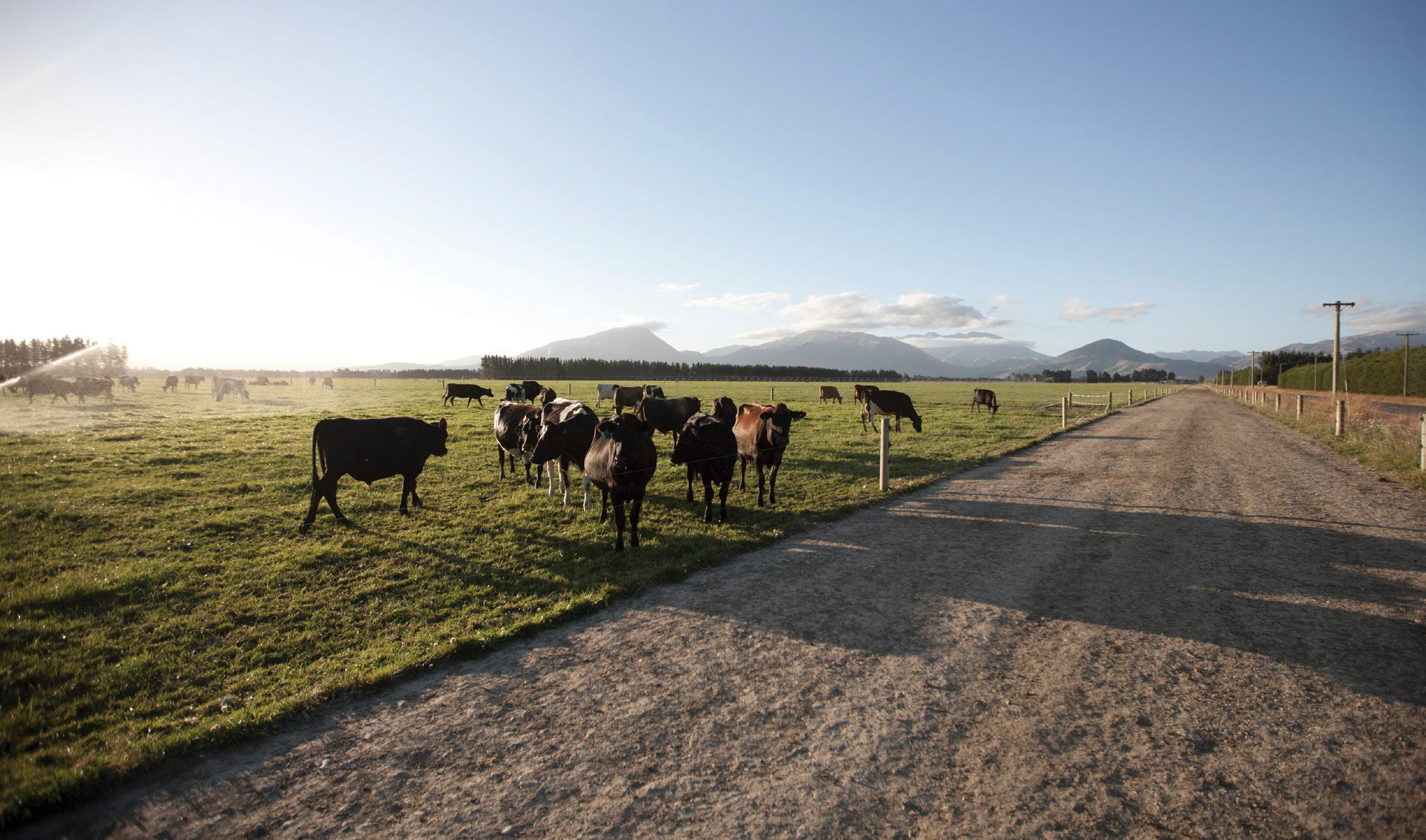
4 minute read
Vets Voice: Prevent toxic nitrate shock
VETS VOICE NITRATE TOXICITY
Prevent toxic nitrate shock in stock
Words by: Lisa Whitfield
Nitrate toxicity in stock is one of the most devastating acute animal health problems I have seen on farms in New Zealand.
The number of animals which can be affected in a short period of time, the resulting deaths, and ongoing losses in those animals that survive put this disease as one of very high importance for prevention rather than just playing roulette with the odds that it will not happen on your farm.
Coming into autumn, there are plenty of paddocks being worked up to replace bare summer crop paddocks with new grass. Fast-growing winter crops such as green oats are being sown. Slower growing winter crops such as kale are already well established. All of these forage species, when grazed under the right circumstances, will pose a risk for nitrate toxicity in stock.
When nitrate is consumed by ruminants such as cattle, the nitrate is converted to nitrite in the rumen (stomach compartment). This is absorbed into the bloodstream and binds to hemoglobin. This blocks hemoglobin from carrying oxygen in the bloodstream. When nitrate levels in the plant are high, and if a ruminant consumes enough of the plant, hypoxia (low levels of oxygen in the blood) can develop within an hour, and death can rapidly follow.
RISK FACTORS
The following situations will increase the risk of high nitrate levels in plants: • Young, rapidly growing plants such as new grass or new chicory; • Cold or cloudy weather conditions, which inhibit the ability of the plant to perform photosynthesis; • Application of nitrogen fertilisers, particularly the first grazing after its application; • A flush of growth following a dry spell.
When the conditions pose a risk for nitrate toxicity, it is important to manage grazing animals closely in order to minimize their risk. • Nitrate test risky paddocks prior to grazing – quantify the risk – details of the testing procedure are discussed further on; • Avoid putting hungry stock onto highrisk paddocks – give them something else to eat before they go to the risky break; • Wait until environmental conditions improve – feed high-risk breaks later in the day to give plants as much daylight as possible with which to perform photosynthesis. If it's frosty, wait until after the frost has lifted. • Only allow stock to graze high-risk paddocks for a short time before moving them on.
NITRATE TESTING
A nitrate test is quick, simple and cheap, and there is no reason testing cannot be performed onfarm so that results are on hand when they are needed. It is very frustrating having to wait an extended period to receive test results when you are trying to make a grazing plan, so why not perform the test yourself?
Prior to grazing a risky paddock, a small sample of the forage is collected. Testing should be performed at roughly the time of day when grazing is planned for – for convenience it might be tested the day prior to planned grazing. 1. The sample is cut into 1cm pieces; 2. A measured amount is placed in a pottle with 2% acetic acid; 3. The mixture is shaken for 1 minute; 4. The mixture is left to rest for 30 minutes; 5. After the resting time has elapsed, a nitrate test dipstick is dipped into the mixture and excess liquid shaken off; 6. One minute later the dipstick is read against the colour scale.
The level of nitrate is determined by a colour change on the end of the dipstick, with graduated shades from white to pink and purple as high nitrate levels are detected.
GRAZING A RISKY PADDOCK
Don’t just leave the stock to it when they are grazing a risky paddock. Check on them an hour after you put them on the break paddock. Look for signs of nitrate toxicity, which include: staggering animals (they look like they are drunk), rapid breathing and animals lying down.
Death can occur rapidly due to lack of oxygen, so if you think you are seeing animals with nitrate toxicity call your vet immediately and let them know what is going on. They will mobilise people immediately to bring treatment to your animals. Do not panic, keep calm and in control, and follow the advice of your vet.
Nitrate toxicity affects a lot of farms each year – don’t leave it to chance that you won’t be one of them.
A nitrate test kit – acetic acid, pottles and nitrate test dipsticks.
Green oats with a light frost – this is a high risk crop for nitrate toxicity.

• Lisa Whitfield is a Manawatu-based production animal veterinarian with Lisa Whitfield Farm Vet Services.










